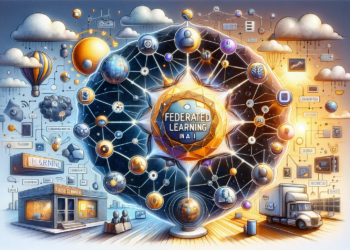Mahalanobis Distance: A Cross-Cutting Axis in the Evolution of Artificial Intelligence
The Mahalanobis Distance, a quantitative statistical concept coined by Prasanta Chandra Mahalanobis in 1936, has emerged as a pivotal algorithm in the domain of Artificial Intelligence (AI). It constitutes a distance measure that captures the essence of statistical correlation among multidimensional variables, allowing for the differential weighting of features according to their dispersion.
Pioneering Applications and Traditional Algorithms
Initially, the Mahalanobis Distance was widely applied in pattern recognition techniques and statistical classification. Its use in clustering algorithms like Principal Component Analysis (PCA), where it optimizes the identification of patterns intrinsic to the data, remains one of its most frequent applications.
In the realm of machine learning, weighted nearest neighbors algorithms employ the Mahalanobis Distance as an approach to improve classification accuracy compared to standard Euclidean distance by considering the intrinsic structure of the data. Thus, this metric exceptionally adapts to the variability of the features.
Recent Advances: Neural Networks and Deep Learning
With the advent of neural networks and deep learning, the significance of the Mahalanobis Distance has been renewed. Researchers have adapted the metric to develop specialized neural layers that incorporate the distance as part of the loss function during training. These techniques are especially relevant for contexts with a scarcity of categorized data, such as semi-supervised learning or transfer learning.
A notable advancement lies in the use of the Mahalanobis Distance in siamese and triplet neural networks, encouraging the latent space representations to maintain semantic coherence with respect to the categories. When used to calculate the disparity between embeddings, it contributes to making the learning invariant to perturbations.
Innovations and Implications
Recent research in anomaly detection and recommendation systems has taken advantage of the Mahalanobis Distance to quantify the degree of atypicality or affinity between users and products respectively. In security systems, the inclusion of this metric has strengthened intrusion detection models by more effectively discriminating between normal access patterns and those that are suspicious.
The technique has also been integrated with Bayesian optimization procedures, enabling improved exploration of the hyperparameter space during AI model tuning phases, considering the correlation between them and the results of cross-validation.
Case Studies and Results
A relevant case study can be found in the biomedical sector, where the Mahalanobis Distance plays a role in the identification of genetic patterns associated with diseases. When comparing genomic data sets, the metric has enabled a more sensitive discernment of the critical differences between normal and pathological phenotypes.
Another application is in the field of computer vision, where it has been used to increase the accuracy of facial recognition systems under varying conditions of lighting and pose by effectively weighting the degree of similarity between images.
Future Directions and Challenges
The proliferation of Big Data and the high dimensionality of current data sets pose challenges to the effectiveness of the Mahalanobis Distance. However, researchers are addressing these challenges through the hybridization of the concept with dimensionality reduction algorithms and the development of scalable techniques that enable its implementation in massive data environments.
The deeper integration of the Mahalanobis Distance within computational cognitive models inspired by human decision-making and perception is imminent. The ability to model human judgment with this metric opens avenues for more refined expert systems and AI algorithms that emulate the complexity of perceptual reasoning.
Conclusion
The Mahalanobis Distance continues to be a fundamental tool in the arsenal of AI techniques. Its capability to address variability and correlation in complex data and adaptability to advances in automated learning underscore its importance in the current scientific landscape. By remaining at the peak of the synergy between statistics and machine learning, the metric has the potential to play a crucial role in the next frontier of AI: the deep understanding of intricately interconnected systems.






















